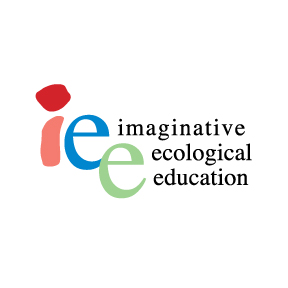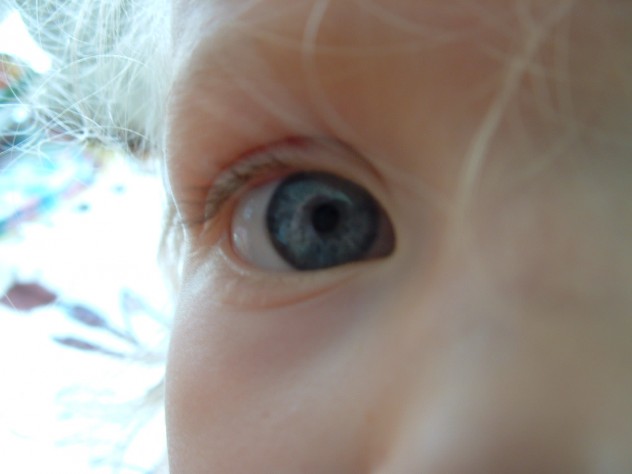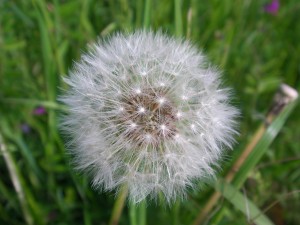My kids think I’m exaggerating. I’m not.
I grew up without a cell phone. So, when I was away from home, I either didn’t talk to anyone who wasn’t with me (GASP!) or I brought a quarter and used a pay phone. (What’s that?) My first computer was practically the size of a smart car. No, it didn’t fit in my pocket and I didn’t also use it to call people, take pictures, and do my banking. I looked things up in books called encyclopaedias. I couldn’t take a virtual tour of the MoMA from my sofa.
I’m not taking on all the ways life in 2016 differs from the 1980s. What I’m concerned about is the impact of technology on our ability to be present.
Nowadays, alerts, alarms, beeps, bleeps, tweets, nudges, and notifications are a part of life. They are commonplace; they are the “normal”. Information travels at warp speed in this highly technological world—and we are constantly being notified about it. Basically, we live in a world of seemingly endless distractions. Those people who function best in this media mad world are those that live in a perpetual state of multi-tasking.
Truthfully, I don’t always find the speed of our techno-living particularly easy to manage. I have had to learn to not only use the technology, but actually live differently. Unlike me, my kids will function just fine in a hyper-paced world because this is what they know. Their normal is a world in which one constantly encounters alerts, alarms, beeps, bleeps, tweets, nudges, and notifications—a complicated tug-of-war continually pulling our attention in different directions.
Here’s the rub: nothing comes without a cost. It seems to me that our kids are missing out on important aspects of being and knowing if we do not explicitly balance out technological and cyber ways of learning with direct, body-based, and sensory types of learning experiences. I was inspired this week by Michael Nobb’s article The Power of Sitting Still. Imagine…sitting still. Without being plugged in. (Check out Michael’s website Sustainably Creative)
Ask Yourself
Are our children equipped with the skills to fully engage with the world around them?
Do they have an awareness of their bodies or how their bodies engage with a living world?
After time spent in the vivid, imaginary world of a video game, how many find the backwoods or park a place of wonder?
Learn To Live Attentively
 Use the following activities to help your children or your students (or yourself) learn to live attentively* in a media mad world. Help them to develop the skills to increase their awareness, focus on the present moment, and expand their understanding. Help them to expand their awareness of themselves and their place in the world. (*I borrow this term from Emma Kidd. I recommend her book First Steps to Seeing: A Path Towards Living Attentively to anyone interested in learning more about how to engage dynamically with the world.)
Use the following activities to help your children or your students (or yourself) learn to live attentively* in a media mad world. Help them to develop the skills to increase their awareness, focus on the present moment, and expand their understanding. Help them to expand their awareness of themselves and their place in the world. (*I borrow this term from Emma Kidd. I recommend her book First Steps to Seeing: A Path Towards Living Attentively to anyone interested in learning more about how to engage dynamically with the world.)
Without providing such balance—or, at least attempting to do so—we are doing them a disservice; they may believe that knowing the world through media is complete. They may be completely unaware of what they are missing in the world around them.
The following activities involve practicing skills that focus on the present. The now. They engage a whole range of the body’s tools for more fully acknowledging and experiencing the world. (In Imaginative Ecological Education this is the Activeness principle.)
Activities are open-ended and allow you to make different curricular connections if you wish—any number of creative writing activities, for example, could emerge from the work. I hope you find the ideas useful in silencing distractions and re-focusing attention on the wonder-ful world.
Engage The Senses & Expand Awareness
It is worthwhile introducing these activities to students; they will be unlike what they are used to doing. You might begin by discussing the idea of “attention”. The idea of “paying attention” is certainly an expectation in most learning environments. Ask students: What does it mean to “pay attention”? What attracts your attention right now? Help students think more about the ability to hone in and attune to the flow of sensory information around them. This ability has had great value for our species’s survival. It is also the starting point of much of art, literature and scientific discovery. That being said, more often than not we ignore what’s going on around us.
Tell students that the activities they will be doing aim to increase their ability to discriminate. They aim to increase appreciation and awareness. Suggest to students that we mostly take-for-granted the world around us. Its “taken-for-granted-ness” is the very reason we hardly notice it; these activities aim to, instead, reveal the extraordinary in the ordinary world.
Activity 1: A Thing Is Not The Experience
 Another name for this activity is “an x is not this x in my hand.” The aim of the activity is to contrast an idea or basic knowledge of something with one’s actual experience of it. You can do this activity with virtually anything (an apple is not this apple in my hand; a flower is not this flower in my hand etc.).
Another name for this activity is “an x is not this x in my hand.” The aim of the activity is to contrast an idea or basic knowledge of something with one’s actual experience of it. You can do this activity with virtually anything (an apple is not this apple in my hand; a flower is not this flower in my hand etc.).
Step one for you is to choose an object you want students to work with (e.g. tree, flower, apple, leaf, pencil). It should be something that can easily fit into the palm of the hand or students can touch (e.g. if you choose a living thing like a flower, this can be done without students actually picking the flower). You may choose a human-made object but I find that natural objects are particularly useful for this set of activities.
Before you hand out a sample of your chosen object to each student or before they get to closely examine something, simply say that they will be examining x (e.g. a leaf) and ask students to describe it. What do they know about x? What is x like? Share ideas of what they visualize in their minds. The next step is to give them an opportunity to have direct contact with the object—if possible, take this learning activity outside.
Example: a leaf. Ask students to encounter the leaf with different senses—what does this leaf look like (What colours are on it? What different markings does it have? What are the different parts and how are they interconnected? What visual patterns do they see?). *If possible, provide students with magnifying glasses to enhance their visual perception. What does the leaf smell like? What does the smell remind them of? Are any particular emotional reactions or ideas evoked by the smell? Now encourage your students to focus on the texture or feel of the leaf—what are the textures? How does it feel different to the finger tips versus the skin on the forearm or the cheek? Students might rub their hands together or clap them vigorously and then touch the leaf—how does it feel now? How does its weight feel to the fingers? Next, does the leaf have a sound? If so, what is it? If not now, when does this leaf have sound or evoke sound? (Depending on the object you choose for this activity, you might also focus on taste. What does this thing taste like—how vividly can the taste be described?)
Expand perspective. Take time for students to try to visualize the object within context. What new meaning is brought to the leaf (or whatever you choose) when it is encompassed in a broader context? Where does the leaf fit in the larger scheme of the tree or bush? Where does the tree or bush fit in the larger context of the field or forest or community? Where does it fit into the larger world if we step back and look at the local place from a distance? What does it add to the whole?
Concluding the activity: Consider the multiple ways and modes through which your students could document their experiences. Be sure to include a final discussion: How does the experience of the object—the active and dynamic engagement differ from the “concept”? So, for example, how is an leaf (or flower or apple or whatever) different from the experience of the leaf at their fingertips?
Activity 2: Perceiving Wholeness & Expanding Awareness
Living attentively also involves taking a broader or more expansive look at the world. The previous activity did some of that by placing the object in larger context. Ideally we want students to see that the tiniest of objects are as important to understanding context as the largest. Try to encourage students to scrutinize where they are methodically. Ideas to support this broader way of perceiving the world in more detail:
Encourage students
–to look at a horizon, and try to describe all that is below and above it.
–to focus closely on negative space (for example, they might be asked to focus on the “empty” space between the branches of a tree or behind a flower, rather than the branches or flower itself).
–to conduct a detailed survey of where they are using different senses (They could then try to combine/share all the details they can from various perspectives, so that they appreciate their surroundings as richly and as completely as possible).
–to seek patterns—what evidence is there of interconnections and interrelated processes going on around them? What connects them to their contexts?
More activities available HERE.
Old & New Sources of Inspiration
Abram, D. (1996). The spell of the sensuous: Perception and language in a more-than-human world (1st ed.). New York: Pantheon Books.
Kidd, E. (2015). First steps to seeing: A path towards living attentively. (Edinburgh: Floris Books).
Van Matre, S. (1972). Acclimatization: A sensory and conceptual approach to ecological involvement. Martinsville, Ind.: American Camping Association.
Van Matre, S. (1974). Acclimatizing: A personal and reflective approach to a natural relationship. Martinsville, Ind.: American Camping Association.



